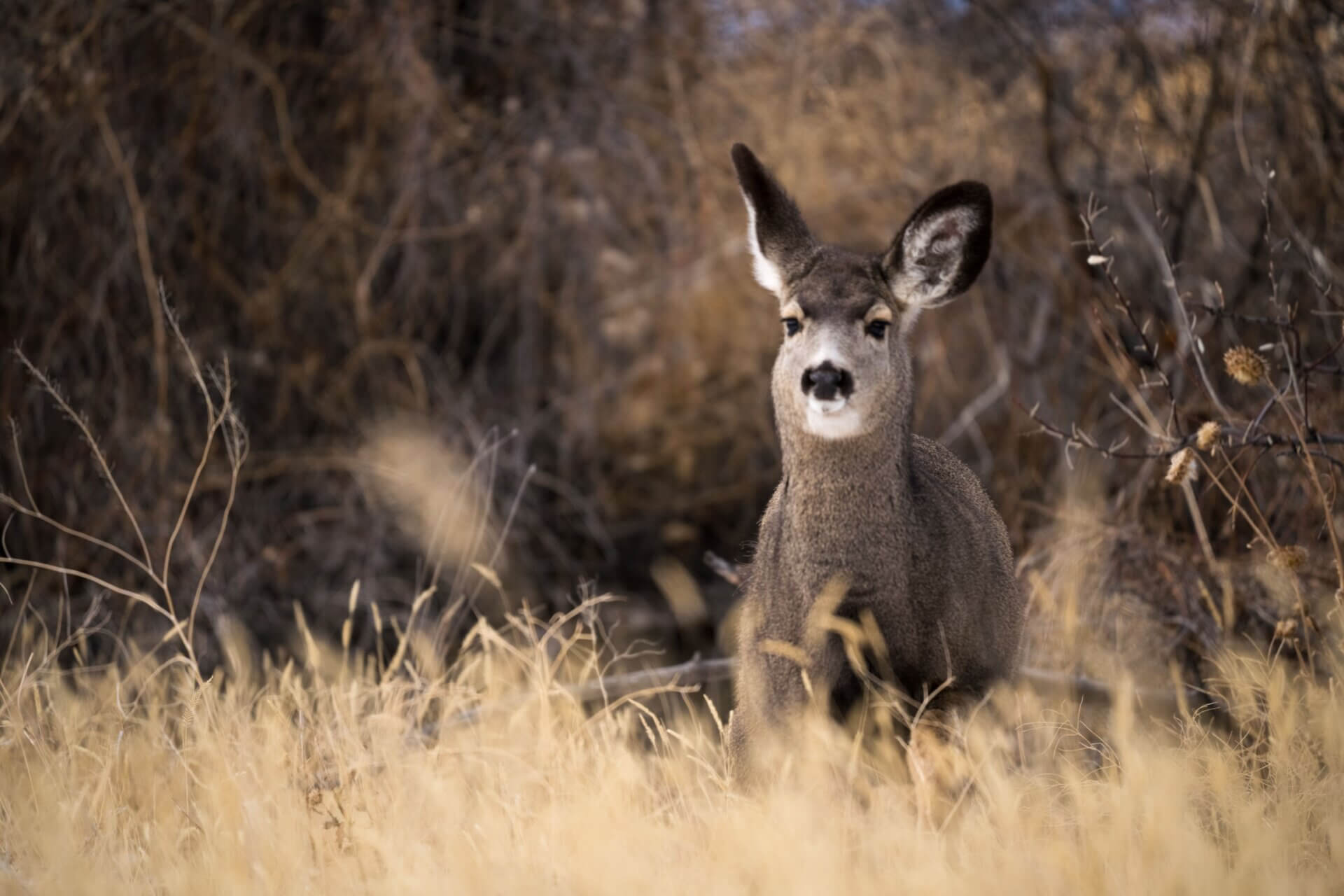
The Magnificent Mule Deer
Identified by their grayish coats, black-tipped tails, and beamed antlers, mule deer (Odocoileus hemionus) are. one of two species of deer found in Wyoming. Some “mulies” are famous for their long-distance migrations to access the best seasonal habitats. For example, GPS collar data shows some deer travel between seasonal ranges in the Tetons and the Red Desert. This means these endurance athletes complete incredible, one-way journeys of up to 200 miles each year!
In summer, mule deer forage on nutritious grasses, flowers, and leafy greens, while in winter, their diets shift to less calorie-rich plants like sagebrush, rabbitbrush, mountain mahogany, and bitterbrush. Since mule deer tend to rely on specific environments to survive, populations can be susceptible to extreme weather events that negatively impact their habitat. In the winter of 2022-23, an abnormally deep snowpack and below-average temperatures made it much more difficult for deer across western Wyoming to access food. In an average winter, around 85% of adult females survive. Last year, overwinter survival of adult females in the Wyoming Range was estimated at only 33%.
This winter was relatively mild, and a brighter picture is starting to emerge. Wildlife managers report mule deer that persisted through the unusually harsh conditions of the 2022-2023 winter are now thriving. This is due to less competition for resources and the sheer abundance of nourishing forage that resulted from the water-rich spring of 2023. In fact, many of Western Wyoming’s mule deer are usually plump. For the individuals that survived the die-off and the offspring of those deer, “groceries” are plentiful, and life is looking pretty good!
Do all mulies move so far?
Wyoming’s mule deer population can be broken down into dozens of separate herds. Even within herds, some deer migrate while others stay in the same place all year. This is a survival strategy that enables the larger population to withstand weather events or changes in habitat that impact one part of the landscape more than another.